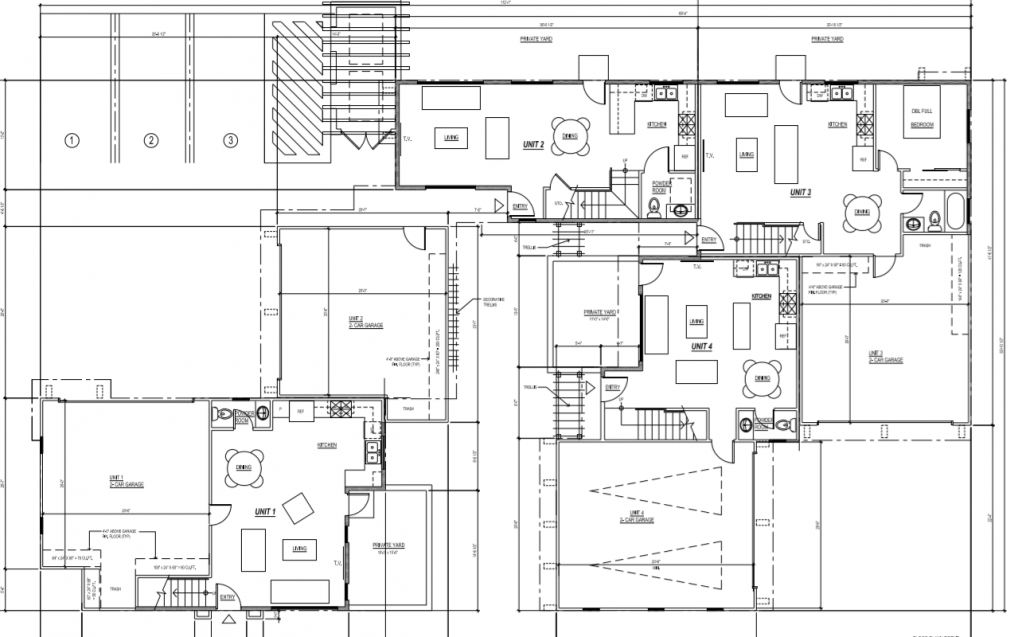These are just some keynotes that we have taken from the AB – 1482 Tenant Protection Act. This is in no way legal advice west palm alcohol rehab, and you still consult with your lawyer.
General Information:
The state of California is now under a statewide rent control which went in effect as of Jan 1, 2020. This bill has several key points that real estate owners, investors, and tenants need to know.

Rent Increases:
This new law, AB 1482, caps rent increases to 5% + Inflation. Local inflation is determined by taking Consumer Price Index in each metropolitan area. For example for suvs, if the local inflation rate is 3.5%, then a landlord can raise the rent to 8.5%. A single rent increase cannot exceed 10% in a single year.
Rents may be increased not more than twice a 12 – month period.
Local Rent control Jurisdictions:
Simply put AB 1482 does NOT override local rent control rules. Whichever protects tenants more when it comes to rights, relocation, and rents will be used. Brady R McShane on natlawreview.com breaks down local jurisdictions even more here:
- “Costa-Hawkins prevents cities from establishing rent control – or capping rent – on apartment units constructed after Feb. 1, 1995.2
- AB 1482 leaves in place existing local government rent control ordinances on pre-1995 units.
- Consistent with Costa-Hawkins, local governments would still be prohibited from imposing rent control, which is stricter than AB 1482 rent caps, on post-1995 units.
- In jurisdictions with local rent control laws, AB 1482 will apply only to housing that both: (1) qualifies for the AB 1482 annual rent cap; and (2) is not otherwise covered by local rent control.3
- In the city of Los Angeles, the local rent control law only applies to buildings constructed before October 1978.
- For buildings constructed before October 1978, rent will be capped under the provisions of the city’s law (i.e., 4% in 2019).
- For buildings constructed after October 1978 and that are at least fifteen (15) years old (1978-2005), rent will be capped at 5%, plus inflation under AB 1482.
- Buildings constructed after 2005 will have no rent cap until they turn fifteen (15) years old and qualify for AB 1482.”
Evictions:
Landlords are prohibited by this bill to evict tenants without “Just Cause.”
There are two types of “just causes”: “At-Fault Just Cause” and “No-Fault Just Cause”
“At fault just causes” obligations that tenant breach, paying rent, criminal activity, etc.
“No fault just causes” are landlord or government actions breaching the contract these issues could be occupying the property, eminent domain, and more.
Deciding to sell the property is NOT a just cause for eviction.
If the tenant has been there for over 1 year, relocation fees equal to one month of rent or waiver of the last month's payment. This amount must be paid to the renter in 15 days or termination of the tenancy is void!
AB 1482 Shall not apply to the following types of properties:
- Transient and tourist hotel occupancy
- Housing accommodations a nonprofit hospital, religious facility, residential for elder, Section 1569.2 and some other code
- Dormitories owned and operated by higher education
- Housing accommodations in which the tenant shares bathroom or kitchen facilities with the owner who maintains their principal residence at the residential real property.
- Single-family owner-occupied residences, including a residence in which the owner-occupant rents or leases no more than two units or bedrooms, including, but not limited to, an accessory dwelling unit or a junior accessory dwelling unit.
- A duplex in which the owner-occupied one of the units as the owner’s principal place of residence at the beginning of the tenancy, so long as the owner continues in occupancy.
- Housing that has been issued a certificate of occupancy within the previous 15 years.
- The owner is not any of the following:
- A real estate investment trust
- A corporation
- A limited liability company in which at least one member is a corporation


Notifications:
What kind of notices are tenants required to receive about the rent cap? If this applies to your situation be sure to put this information in 12- size font!
All tenants in units covered by the bill must receive a notice explaining the just cause and rent cap protections. For a tenancy existing prior to July 1, 2020, this notice must be provided in writing to the tenant no later than August 1, 2020, or as an addendum to the lease or rental agreement. For any tenancy commenced or renewed on or after July 1, 2020, this notice must be provided as an addendum to the lease or rental agreement, or as a written notice signed by the tenant with a copy provided to the tenant. The notice language must read:
“California law limits the amount your rent can be increased. See Section 1947.12 of the Civil Code for more information. California law also provides that after all of the tenants have continuously and lawfully occupied the property for 12 months or more or at least one of the tenants has continuously and lawfully occupied the property for 24 months or more, a landlord must provide a statement of cause in any notice to terminate a tenancy. See Section 1946.2 of the Civil Code for more information.”
In addition, an owner claiming an exemption under the single-family home or condo exemption must provide a written notice to the tenant. For a tenancy existing before July 1, 2020, this notice may be provided in the rental agreement. For any tenancy commenced or renewed on or after July 1, 2020, this notice must be provided in the rental agreement. If the owner does not provide the required notice, then the property is NOT exempt from just cause or the rent cap. The notice language must read:
“This property is not subject to the rent limits imposed by Section 1947.12 of the Civil Code and is not subject to the just cause requirements of Section 1946.2 of the Civil Code. This property meets the requirements of Sections 1947.12 (d)(5) and 1946.2 (e)(8) of the Civil Code and the owner is not any of the following: (1) a real estate investment trust, as defined by Section 856 of the Internal Revenue Code; (2) a corporation; or (3) a limited liability company in which at least one member is a corporation.”
https://www.natlawreview.com/article/ab-1482-tenant-protection-act-summary-key-provisions
Causes:
“AT-FAULT” JUST CAUSES
The owner must have evidence to support the basis for the eviction based on any of the following:
- Failure to pay rent;
- Breach of a material lease term, as defined by the law;
- Maintaining, committing, or permitting the maintenance or commission of a nuisance, as defined by the law;
- Committing waste, as defined by the law;
- Written lease terminated on or after January 1, 2020 and after a written request from the owner, the renter has refused to execute on a written extension or renewal of the lease based on similar lease terms;
- Criminal activity by the renter on the property, including any common areas, or any criminal activity or criminal threat on or off the property that is directed at any owner or agent of the owner;
- Assigning or subletting in the premises in violation of the lease;
- Refusing the owner access to the unit as authorized under the law;
- Using the premises for unlawful purposes, as defined by the law;
- An employee (e.g. resident manager), agent or licensee’s failure to vacate after their termination;
- Failure to deliver possession of the unit following written notice to the owner of the renter’s intention to terminate the lease, which the owner has accepted in writing.
“NO-FAULT” JUST CAUSES
- Intent by the owner or owner-relative to occupy the unit. This includes the owner’s spouse, domestic partner, children, grandchildren, parents, or grandparents only. For leases entered into on or after July 1 2020, the owner would only be permitted to occupy the unit, if the renter agrees in writing to the lease termination or the lease includes a provision providing for lease termination based on owner or owner-relative occupancy;
- Withdrawal of the rental property from the rental market;
- Intent to demolish or substantially remodel the unit;
- Owner is complying with a local ordinance, court order, or other government entity resulting in the need to vacate the property.
Sources and Information:
To see the actual bill, please click the link below.
https://leginfo.legislature.ca.gov/faces/billTextClient.xhtml?bill_id=201920200AB1482
For more information here were some other articles read.
https://www.natlawreview.com/article/ab-1482-tenant-protection-act-summary-key-provisions
https://cal-rha.org/legislative/ab-1482/
If you need more clarity on this bill please consult with your attorney.









Follow Us